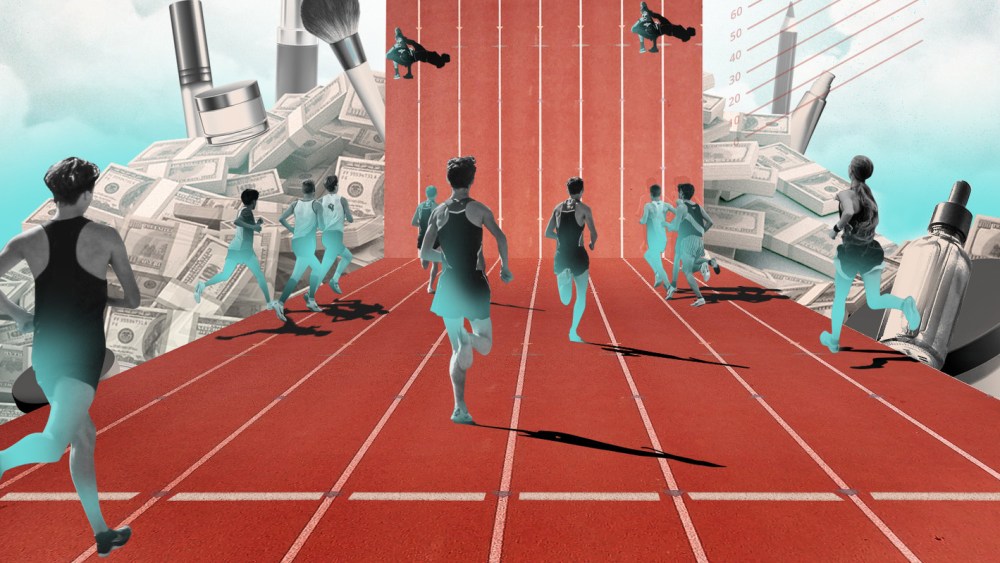Billion-dollar baby no more?
Just a few years ago, as investors dove into beauty at an unprecedented pace, much of the chatter in the industry was focused on the billion-dollar brand — sales wise.
Kylie Jenner’s Kylie Cosmetics, majority-owned by Coty Inc., was often touted as being close to breaking the $1 billion barrier, while the Estée Lauder Cos. indicated that Tom Ford Beauty and Jo Malone London were approaching that significant mark, too. The list goes on.
Now, the playing field has shifted, making it much harder for brands to meet such lofty aspirations.
“A lot of brands are really defining success by being billion-dollar brands. Five years ago, that meant a billion dollars in net sales, then it evolved to mean a billion dollars in retail sales,” said Marissa Lepor, managing director and head of beauty and personal care at The Sage Group. “Now, it’s evolved to be a billion-dollar valuation.
“This focus on a billion dollars is still important, but the definition has become looser and looser,” she continued. “It’s still a status symbol, but it’s less of a term that’s used colloquially when you’re describing a business, because so often it’s used to describe the potential of a brand rather than the actual sales or profit that a brand is generating.”
Part of the reason is with changing consumer habits and an erosion of brand loyalty, it’s become much harder to reach the sales milestone — let alone to stay there.
“At the time when people were really talking about billion-dollar brands and sales, the customer dynamics were different. They would be very brand-loyal,” said Lepor. “Once a consumer had their go-to sales associate at their go-to brand, they wouldn’t just buy one product from them, but they would really buy entire routines from them. The dynamic now is very different.”
Another factor at play is the role of the Chinese consumer. A struggling economy and the rise of C-beauty has led to a decline in demand for international prestige beauty, both in China and in Asia travel retail.
“Something which has really made it much more difficult is the difficulty in China and travel retail in Asia, because both were tremendously dynamic for such a long time,” said one industry source. “If you take these two big-growth elements out, it’s very difficult now to develop a $1 billion brand in these categories.”
Just this month, for example, Lauder blamed declines in Tom Ford makeup on the challenging retail environment in Asia-Pacific and the company’s Asia travel retail business. Lauder’s overall net sales declined 11 percent in Asia-Pacific in its second quarter ended Dec. 31.
So does that mean the path to this once significant marker is blocked?
Not necessarily, said Ilya Seglin, managing director, consumer, retail and e-commerce at Cascadia Capital, who stressed that the path has changed and the approach is now a more cautious one.
“I don’t think it has closed. But I do believe there is more caution around how you get there,” he said. “If it’s done sustainably over a period of time and across geographies, there’s still absolutely a path for global billion-dollar brands.
“What I think gives people pause is when it’s a rocket to the moon and you’re half-a-billion-dollar brand in three years, thanks to social media and one retail partner or Amazon,” Seglin continued. “And it’s like, OK, is this a flash in the pan, or is this actually a sustainable brand?”
Another source stressed that strategics are concerned about assets that grow super fast at rates over 30 percent. “They have to value something and want brands that will be around for 10 to 20 years, and there’s no way to forecast for that.”
This caution may have something to do with several rocket ship brands that were acquired over the past several years, who have not been able to continue with the pre-acquisition pace of growth.
“It takes a special confluence of factors for that company to continue that strong growth trajectory,” said Lori Wachs, founder and managing partner at Penultima Capital, an early investor in K18, pointing to post-acquisition incentives for key management to not just remain in place, but continue to think like a scrappy entrepreneur, as well as the right acquirer who knows how to best scale the company.
“Given the consumer’s mindset of newness, it’s not all that easy to break through to the next level since becoming a larger company doesn’t tend to go hand-in-hand with maintaining the ‘cool’ factor that put it on the map in the first place,” she said. “There are a handful of companies that from what I’ve heard are well on their way to the $1 billion milestone, but it seems to be more the exception than the rule.”

